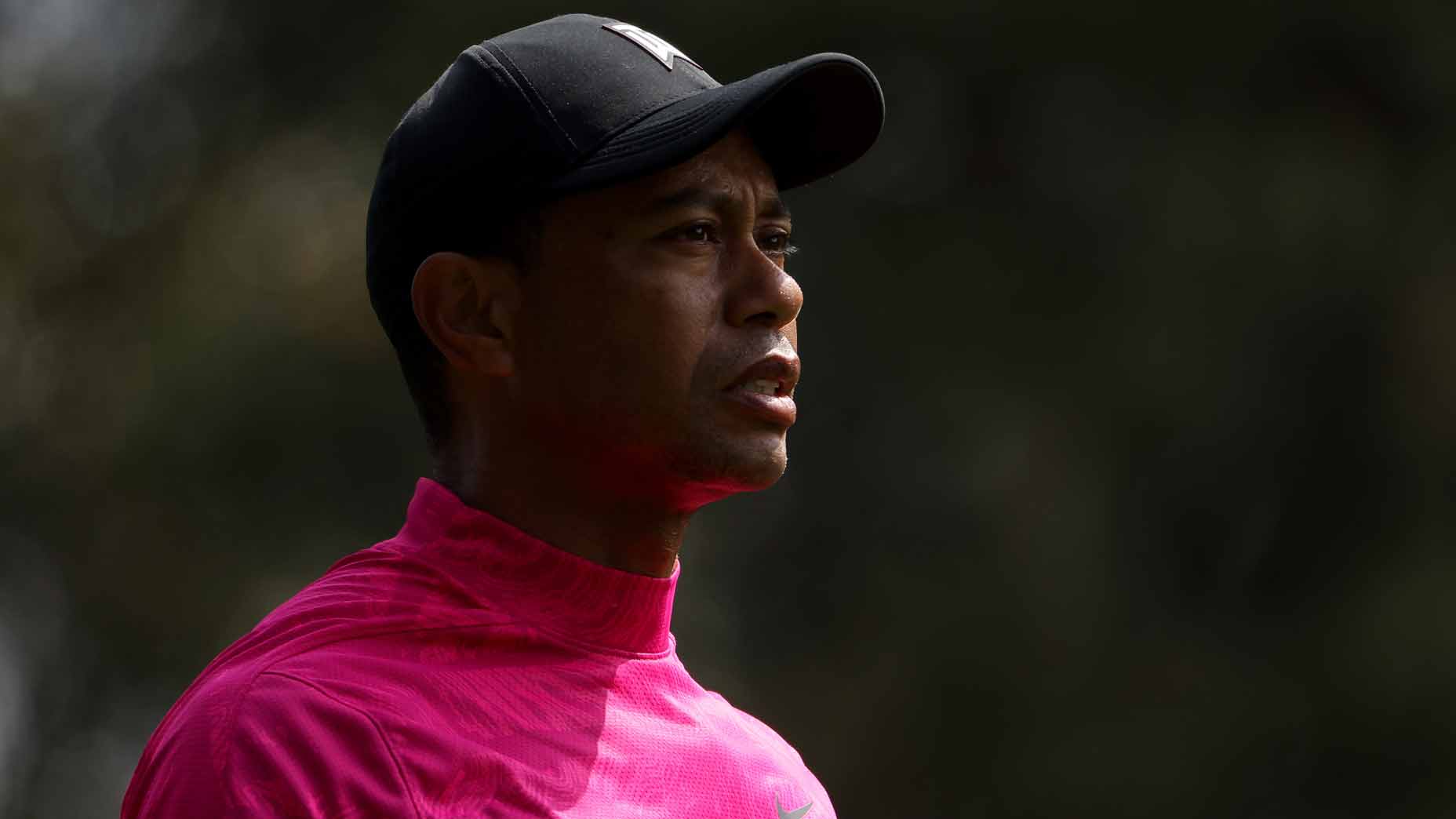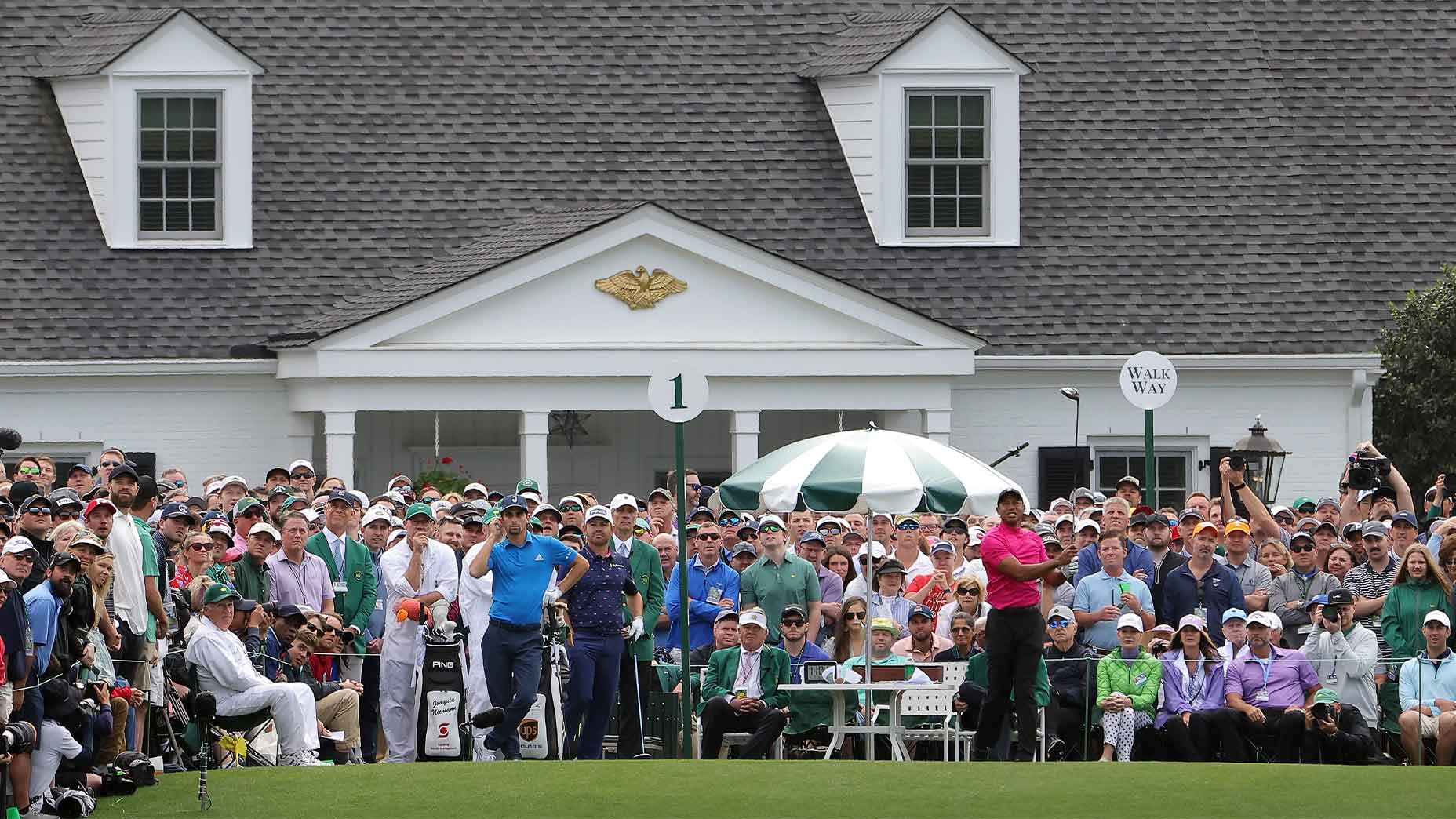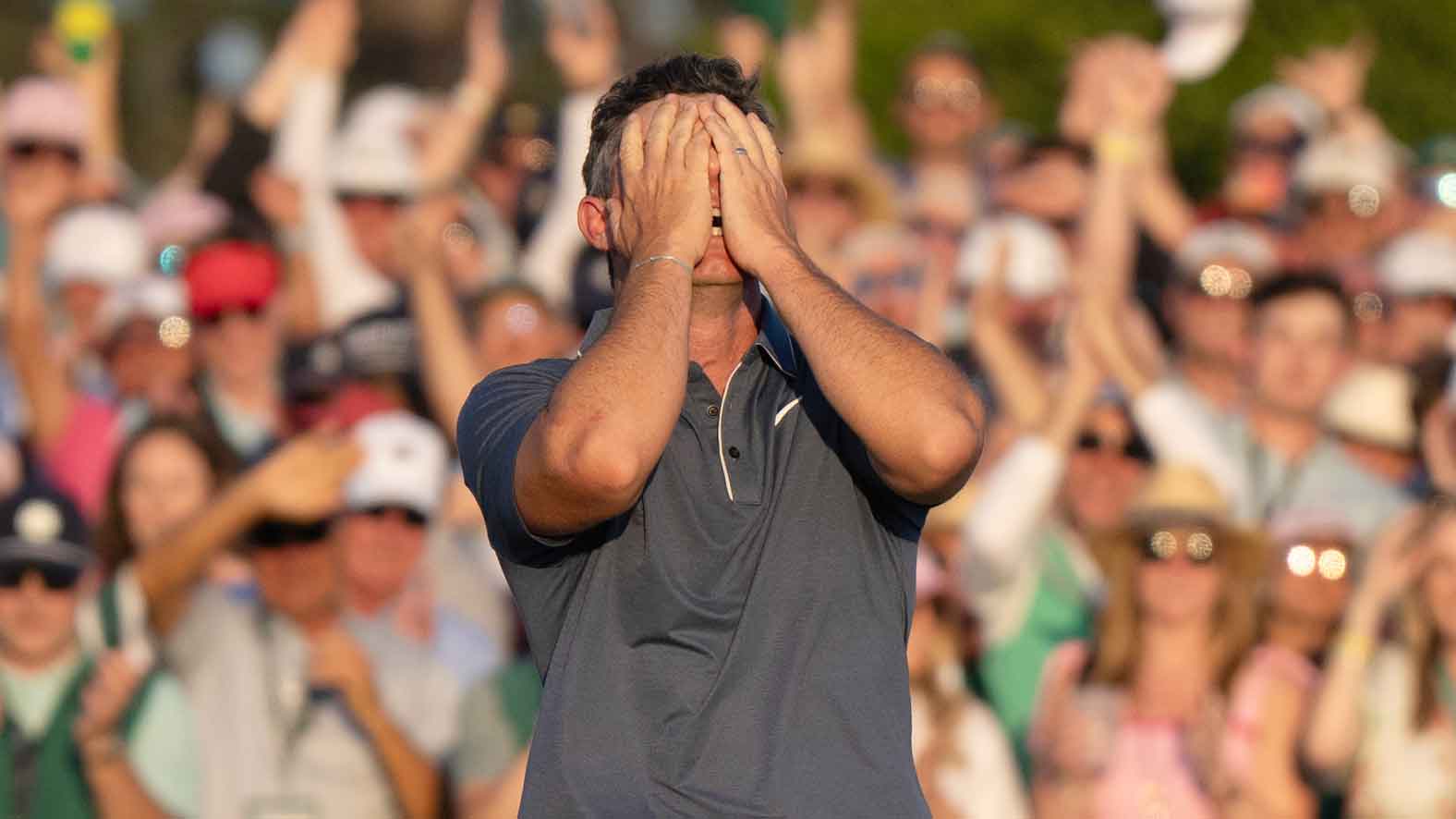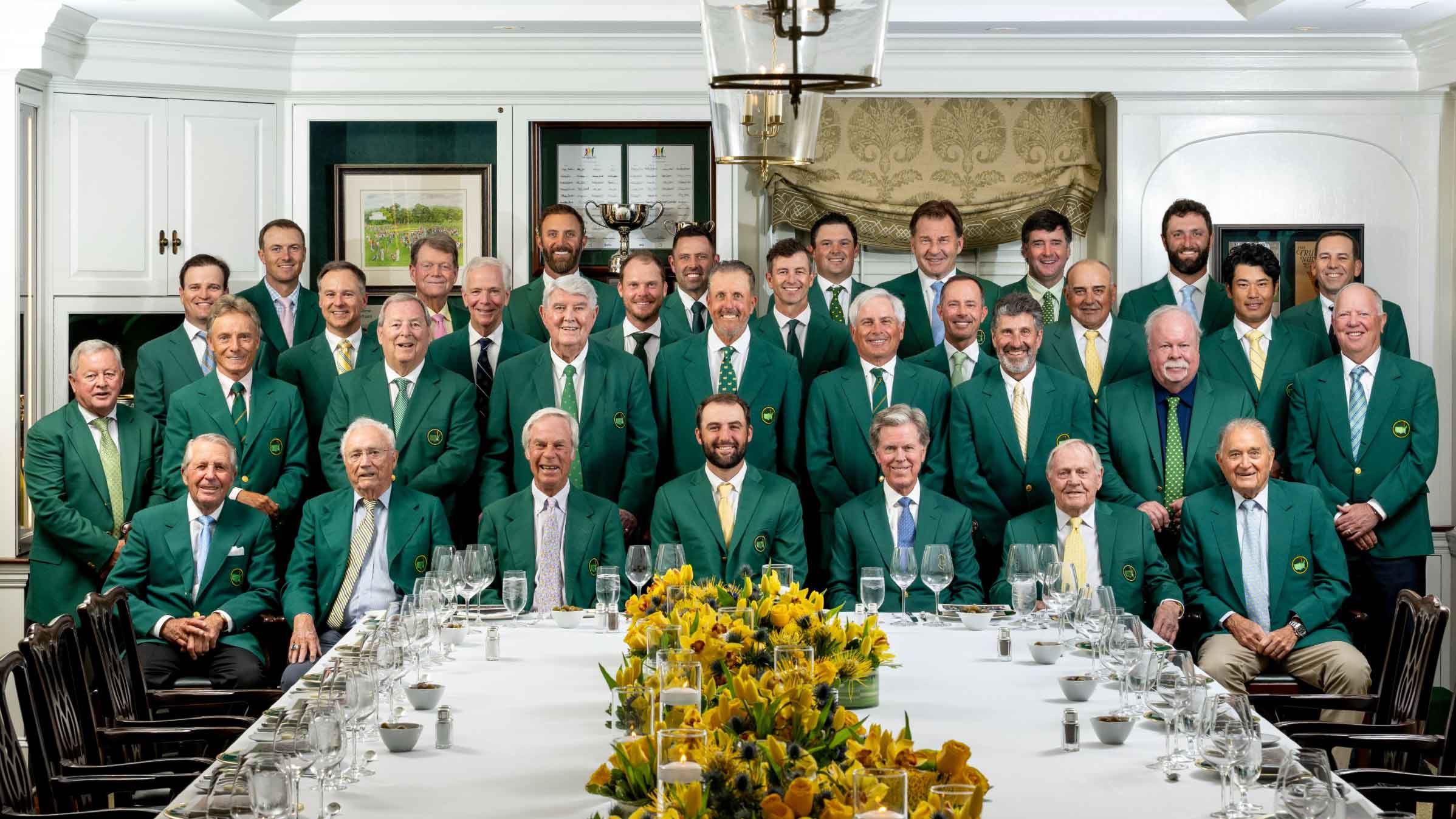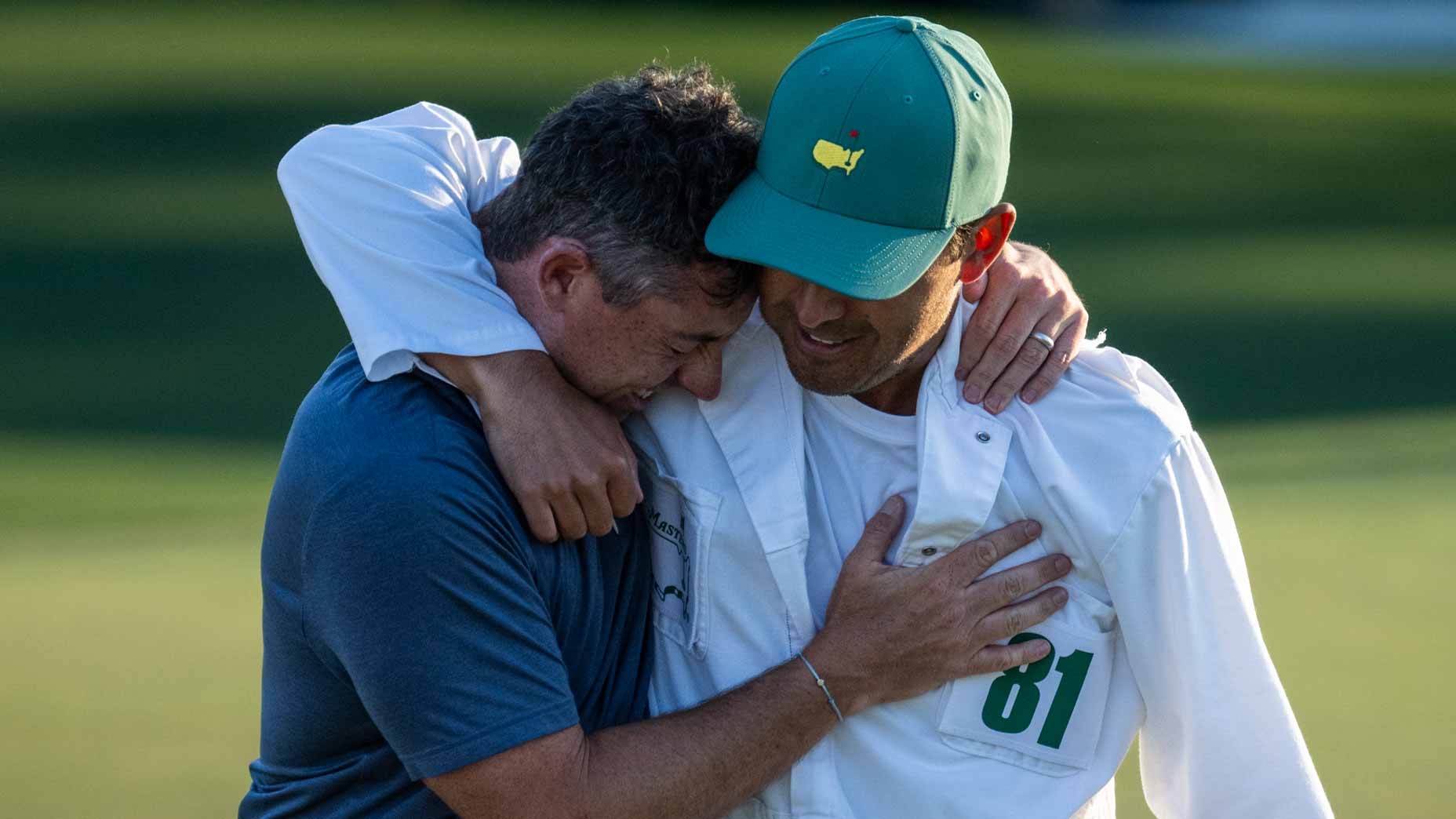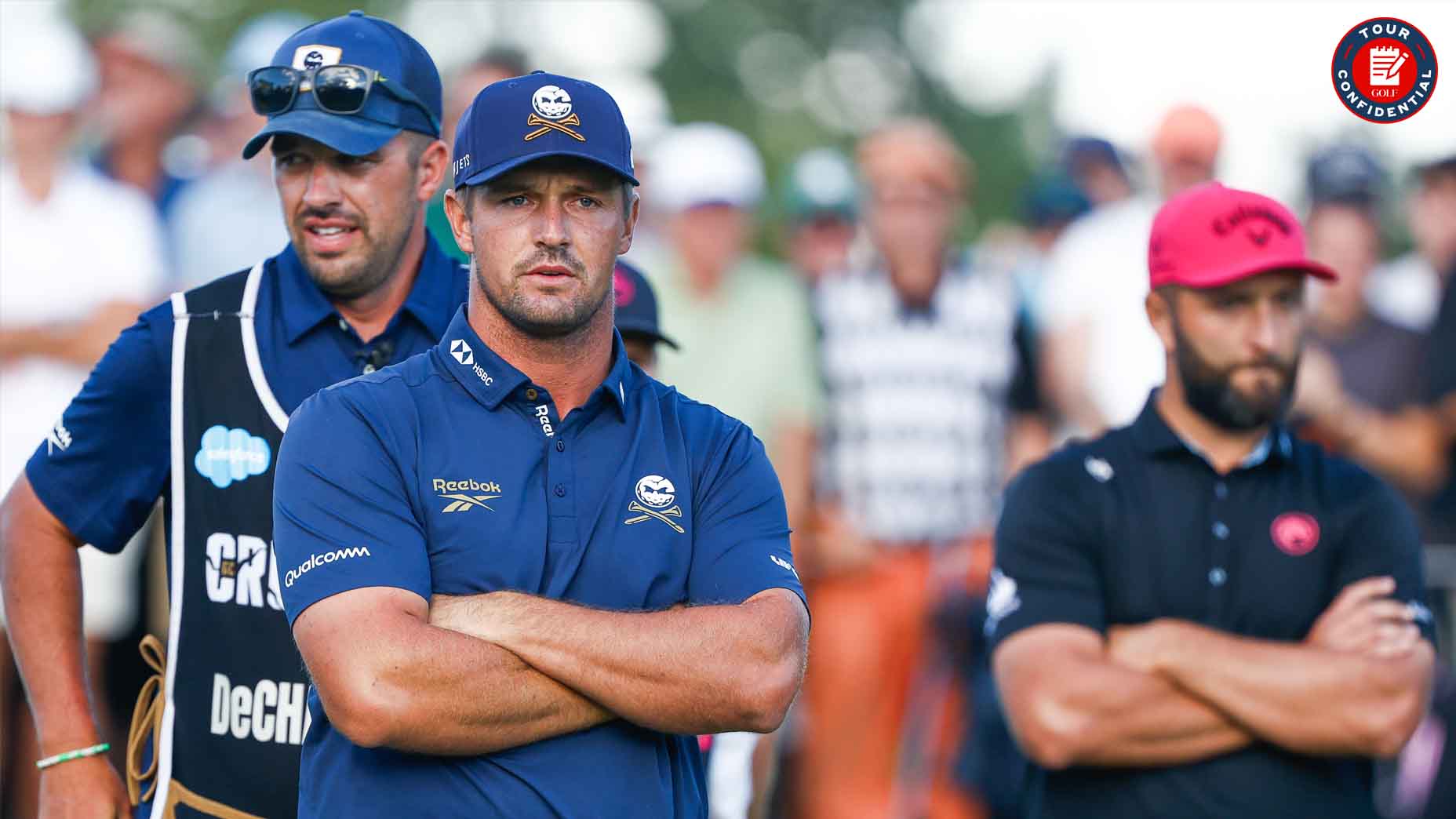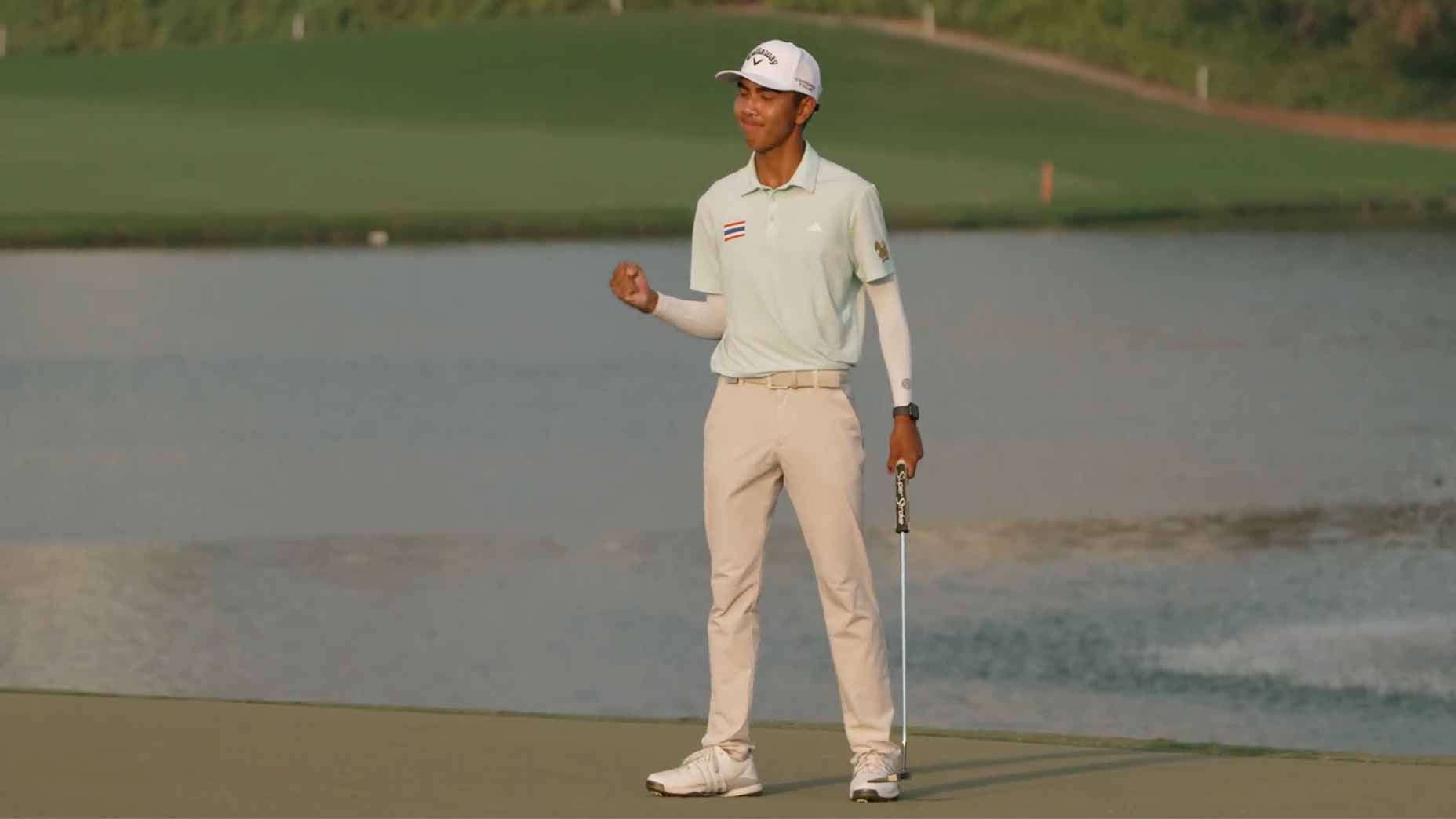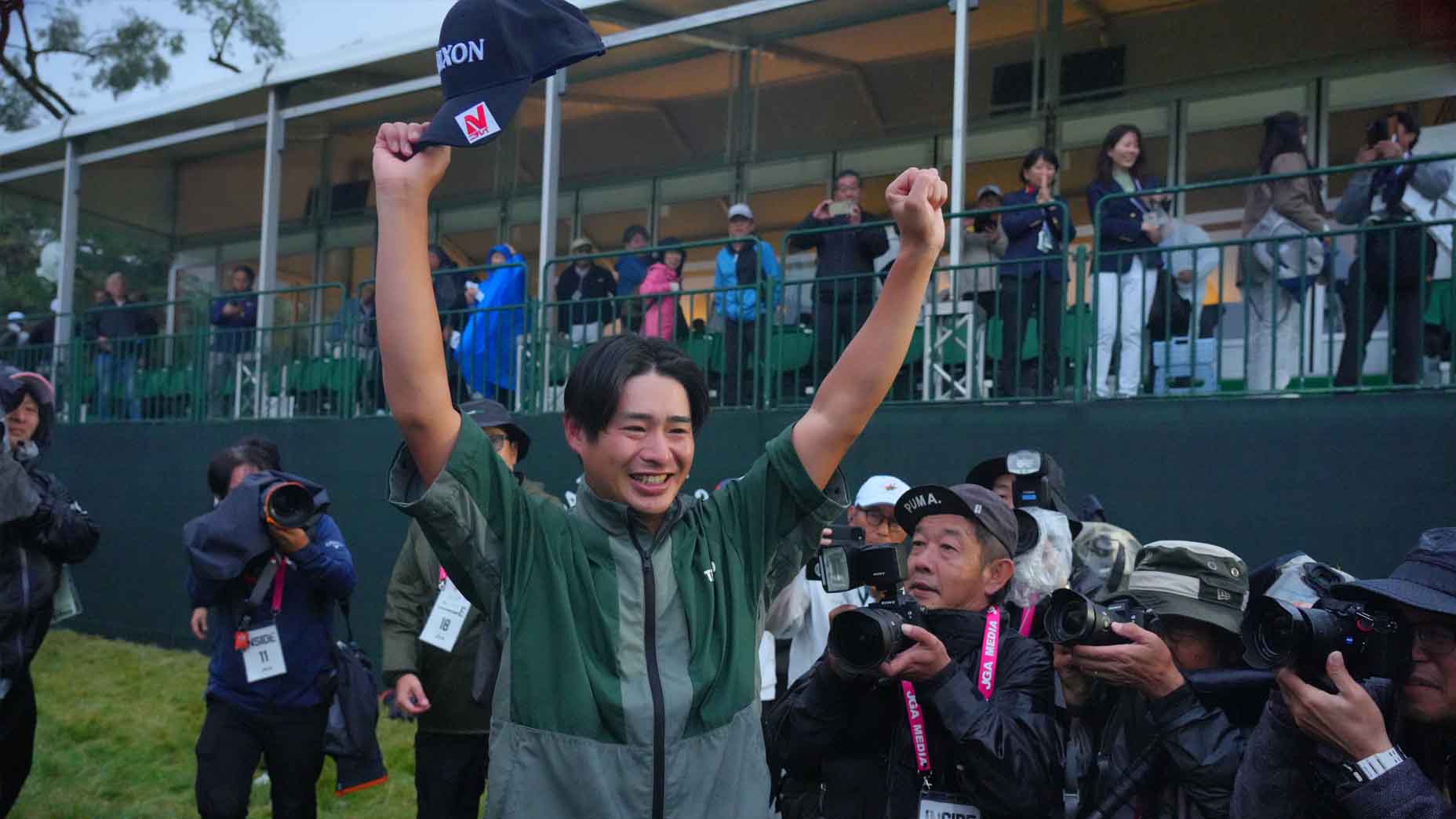AUGUSTA, Ga. — The quietest moment of Masters Thursday came as Tiger Woods stood on the 18th tee. There’s only one thing quieter than a man alone on a golf course: A man alone on a golf course in front of several thousand rabid fans, each one of them in disbelief, trying to play it cool.
The scene at 18 was shocking because we’ve seen it so many times before and we didn’t expect to see it again. Here was Tiger Woods, standing in the middle of a crowd, finishing off a strong opening round at Augusta National. The last time Woods played the Masters, in 2020, he played a strong opening round. The time before that, too. But what happened between Woods’ last Masters and this one made this familiar scene feel miraculous. Put another way: How on God’s greenest golf course was this really happening?
Woods paced around the center of the tee box, unmissable in his highlighter mock-neck, unmissable because he’s the most famous golfer in the world, unmissable because just 14 months after sustaining serious injuries in a horrific car crash he was on the brink of an under-par opening round at Augusta National.
Up ahead, tournament leader Cameron Smith was in the midst of making double bogey from the right trees. That meant extra time to wait. Woods, holding steady at one under par, tried to stay loose. He kicked up one leg, then the next. He held driver in his left hand and rehearsed his takeaway; left arm straight, club in its familiar spot. He bent his head left and then right, loosening his neck. He took several intentional breaths.
Woods’ caddie Joe LaCava didn’t say a word. He paced off several steps to a sprinkler head at the front of the tee box and cross-referenced with his yardage book, gathering the exact distance to the bunker on the left. Woods knows the yardage to the bunker. LaCava gathered information anyway, just in case. He knows when he should speak up and when it’s fine to let the silence hang.
At last the fairway cleared and Woods stepped up to his ball. He set his TaylorMade Stealth behind his Bridgestone ball, took one breath and swung away.
Yikes. What happened next was arguably his biggest miss of the day. The tee shot at 18 is iconic because it’s a narrow chute bordered with giant pines; Woods’ ball went so far left it actually missed the first few trees but eventually clattered into a trunk before pinballing to the forest floor.
Woods muttered his disgust. The crowd sagged around him.
But what happened next summed up Woods’ entire round. He got a stroke of luck, he took his medicine and he made some magic. For Woods, playing competitive golf is more complex than it has ever been. He’s trying to keep it as simple as possible.
‘He’s here’: Inside the moment Tiger Woods returned to the MastersBy: James Colgan
His tee shot made it less than 200 yards but settled in a reasonable position, just short and left of the fairway. Still 270 yards from the hole, Woods considered his options and elected to lay back with an iron in the fairway. From 73 yards, Woods hit a nifty nipper that skipped to a stop just six feet from the hole. And he made that one to save par, preserve a round in red figures and finish off an opening one-under 71.
After the round, Woods was asked to put into words the enormity of the moment.
“Not easy,” he said with a smile. He meant it. “People have no idea how hard it’s been. My team does. They’ve worked with me every single day. I’ve said this before: We haven’t taken a day off since I got out of the bed after those three months.”
The day, Woods added, felt like a victory. He’s here with the intention of lifting the trophy at the end of the week, sure. But making it to the first tee was a victory in and of itself. Walking off the 18th tee just three shots off the lead was another one.
“If you would have seen how my leg looked to where it’s at now … to get from there to here, it was no easy task,” Woods said.
There were always going to be loose swings. Woods hadn’t played a competitive stroke-play round since November 2020, after all, and he hadn’t played in front of a full crowd in more than two years. He had a sloppy warmup session, mixing a combination of chunks, pulls and chunk-pulls in with his usual mastery of the golf swing. But when he got to the first tee he said he drew on an old lesson from his late father.
“I went back to what my dad always said: ‘Did you accomplish your task in the warmup? It’s a warmup. Did you warm up?’
“Yes, I did. Now go play. That’s exactly what I did, I went and played.”
He played indeed. When he got into trouble he made sure to get out quickly and simply. Woods may not be the strongest golfer in the field. He’s certainly not the most flexible. But when it comes to plotting your way around Augusta National, he’s likely the smartest. When Woods first won this tournament, 25 years ago this week, he did so with his driver and his wedge and his putter. If he can somehow contend this week it will be with two lethal weapons: his brain and his hands.
On Thursday, Woods took full advantage of his best shots. His nearly holed his tee shot at No. 6, setting up a kick-in birdie. He hit a terrific two shots to hit No. 13 in two, setting up another birdie. And he brought the house down with a birdie 2 at No. 16, his longest putt of the day coming in front of the biggest crowd of the day, punctuating it with a fist pump that had men tossing beers in the air.
“I mean, the place was electric,” he said. “I hadn’t played like this since ’19 when I won because in ’20 we had Covid and we had no one here — and I didn’t play last year. So to have the patrons fully out and to have that type of energy out there was awesome to feel.”
Just as crucial as taking advantage of the good shots was limiting the damage when he missed. He missed right with his opening tee shot but made a nifty up and down from the front edge. At No. 7 he found trouble but punched from the trees back into the fairway, short of the greenside bunkers, and trusted his short game to save par. He holed a difficult par putt at 9, and another short tester at 10, and another at 11. Finally there was 18, where he turned a potential disaster into a 4.
“I know where to hit it to a lot of these pins, and I miss in the correct spots and give myself good angles,” he said. It sounded simple, put that way. It’s not.
Woods was upset with just two shots, and they came back to back. From 50 yards away at No. 8, Woods missed the green short and then failed to get up and down.
“Lack of concentration on the first one. Second one, lack of commitment.”
Both understandable, given the circumstances. But Woods’ harsh self-assessment was a reminder that he’s not content to show up and make the cut.
“I’m only three back. We’ve got a long way to go,” he added.
Now what? From here it only gets tougher. First comes the cool-down:
“Lots of ice baths. Just basically freezing myself to death. That’s just part of the deal. And getting all the swelling out as best as we possibly can.”
Then comes the warmup ahead of his 1:41 p.m. Friday tee time: “Then getting it mobile and warmed up, activated and explosive for the next day.”
Then he’ll play. Again. One round down. Three to go. He hasn’t taken a day off in nearly a year. He doesn’t intend to start now.
